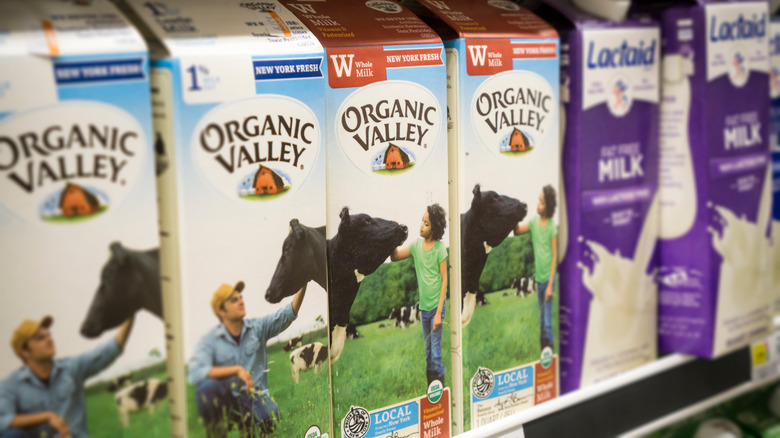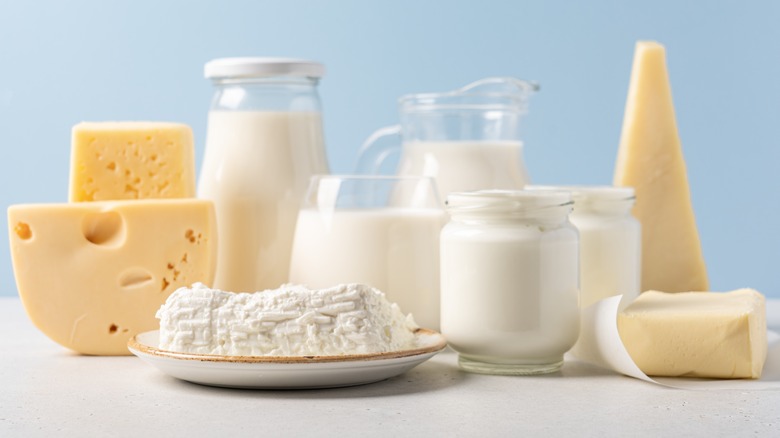Expert Explains Why Fat-Free Cream Is Actually Worse Than Regular Cream
Along with leg warmers, boom boxes, and neon, the '80s was filled with crazy diet fads in a desperate attempt for people to shed a few pounds quickly. Instead of adopting a healthier way of eating, people drastically restricted their calorie intake on various diets like the grapefruit, Scarsdale, or cabbage soup diet, to name just a few. The "experts" were on board.
To lower heart disease, the government and scientists, who didn't fully understand the complexities of nutrition, created the first set of nutritional guidelines for the U.S., touting the benefit of a low-fat, high-carb diet, according to NPR. Despite whole grains, fruits, and vegetables being the intended carbs, Americans heard all carbs were good, and fat was bad. According to Kerri Ferraioli, an expert nutritionist at YorkTest, this nutrition trend influenced a new food market segment brought on by consumers who no longer bought high-fat foods, so "manufacturers listened by removing the fat."
Suddenly consumers could enjoy their favorite comfort foods – pizza, muffins, and cookies in the same amount as before but with zero fat and guilt. The same was valid for high-fat dairy products; milk, cream, and butter were engineered without fat, and the ingredients put in fat's place were largely ignored. Consumers replaced the full-fat cream in their coffee with non-fat alternatives thinking they were eating healthier without making sacrifices. However, Ferraioli adds that the fat-free trend led to a new problem, "the obesity epidemic," and here's why.
Full-fat in moderation
According to Kerri Ferraioli, "One of the biggest problems with removing fat from products is that it's often replaced with sugar, so the products like fat-free cream often just end up containing the same amount of calories as before." To limit sugar, some fat-free dairy products contain artificial sweeteners, which "can cause digestive disturbances and bypass normal glucose metabolism, making us crave sugar." These cravings can lead to binge eating, and since we were ignoring calories and just focusing on lowering the amount of fat in our diets, Americans got fatter.
Ferraioli adds some fat-free products contain hydrogenated fats, which can cause inflammation and "increase the risk of obesity, which can interfere with the function of our cell walls." Fat provides an enjoyable "mouth feel," and removing them can cause consumers to continue to eat until they are satisfied. Science now tells us , found in foods like avocado, nuts, and oily fish, are good fats and part of a healthy diet. These fats help the body absorb vitamins and minerals and keep the body full longer, reducing the risk of overeating.
Regarding saturated fat, the primary fat in dairy products like cream, moderation is key. Unless instructed by a doctor, consuming full-fat in moderation is healthier than eating fat-free dairy products, says Ferraioli, leaving you full quicker and satisfied, without negative digestive issues. According to Healthline, the more fat dairy contains, the higher the omega-3 fatty acids, which benefit heart and brain health and can lower inflammation. Plus, full-fat products like cream taste better.

